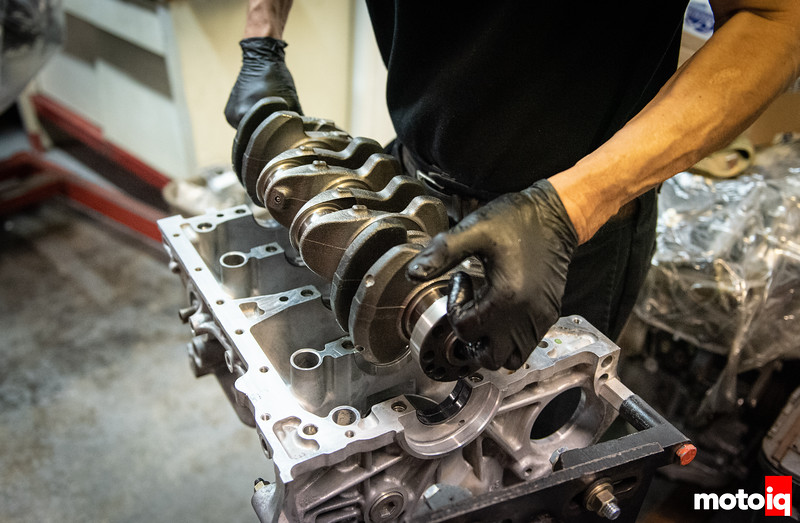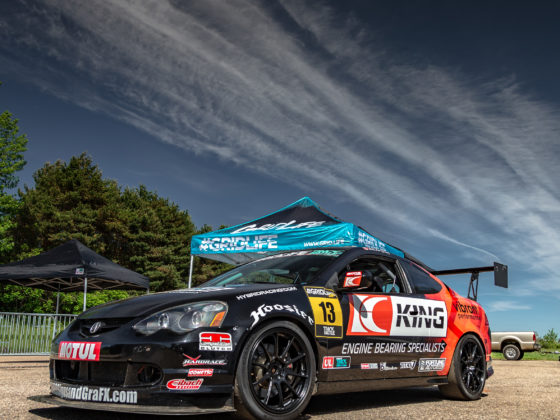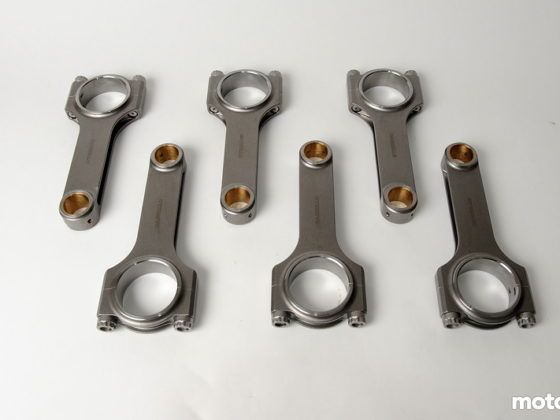
The oil pump chain guide is installed and adjusted.

To maintain timing chain tension even at high RPM with bigger cams and higher tension springs, we used K-Tuned’s chain tensioner. The K-Tuned tensioner has a stiffer spring and reduced travel to keep chain lash in check.

With everything in place, we got the front cover ready for install by applying sealant to it. Of course, you want to use the minimum amount of sealant necessary. You don’t want excess to squish out, break off and migrate about the engine.

A new OEM water pump was installed.

Once we installed the front cover, a Fluidampr front pulley was used. We got into the Fludampr’s advantages in detail in a previous article in this series but basically the Fluidampr has an inertia ring floating in a viscous silicone fluid. The ring is unrestrained and free to move, making it able to damp torsional vibrations over a wide range of frequencies and amplitudes. We have been using Fluidamprs on many of our high horsepower and RPM projects lately with good results.

Now the rear water neck and the OEM oil filter/mount/oil cooler are mounted and coolant hoses attached. We used new OEM hoses.




3 comments
I am relieved You didn’t use the ARP main studs mentioned in Part One of this build.
That would’ve been total overkill on that power level.
In my previous life, I used to work for a motorsport shop that built rally, rallycross and circuit racing K-series engines among other things.
On NA builds with limited budget (which most of them were), we reused OEM Honda main studs up to 4 times, even head studs were reused up to 3 times.
Only difference was, they were always torqued to a specific value with a certain type of lubricant.
And not one time did we have a problem with bolts backing out or losing tension. If a headgasket did blow, it was always due to severe knock or overheating.
This looks like it’s going to be a fun package! What kind of power and torque is expected? Will engine speeds remain about stock?
Using WPC on the camshaft is beneficial on a Honda’s B series as well since these engines don’t have a bearing on the followers like the K series.
Looking forward to seeing what Motoiq does with the transmission of the RSX!